By Angela Vanderbilt
Road construction. It seems like it’s never ending. Some have joked that Ohio has only two seasons – winter and road construction. And the images in the Street Improvement collection would certainly seem to validate that. What is interesting about the images in the collection of street improvements is that many of the streets recorded in the photographs no longer exist. Or, where they do still exist, they are named differently or the surroundings have been altered to the point that the location in the photograph is no longer recognizable.
One major example of a street changing in both name and appearance is Laurel Street – or as we know it today, Ezzard Charles Drive. Originally a narrow street lined with brick row houses and businesses, Laurel Street extended from 1247 Plum Street west to Freeman Avenue, with the Cincinnati Symphony Orchestra Hall towering over the eastern end of the street, as if keeping watch over all who passed. In the winter of 1921, subway construction made its way north along the canal bed to the Laurel Street intersection, where a tunnel ventilator was constructed.

(Left) Construction of subway ventilator opposite Laurel Street, January 12, 1921, 2:02 p.m.
(Right) Laurel Street, west of Canal, with Cincinnati Symphony Orchestra Hall in center background, April 21, 1920, 3:47 p.m.
Laurel Street was first renamed in 1932 when the Cincinnati Union Terminal was under construction at the opposite end of Laurel Street, west of Freeman Avenue. Construction of the terminal meant widening of the streets around the station, in anticipation of increased traffic. At that time the street was renamed “Terminal Parkway”, and often referred to as “Terminal Approach.” Many of the existing buildings, both residential and commercial, along Laurel Street were razed to make room for the expansive parkway to be constructed.
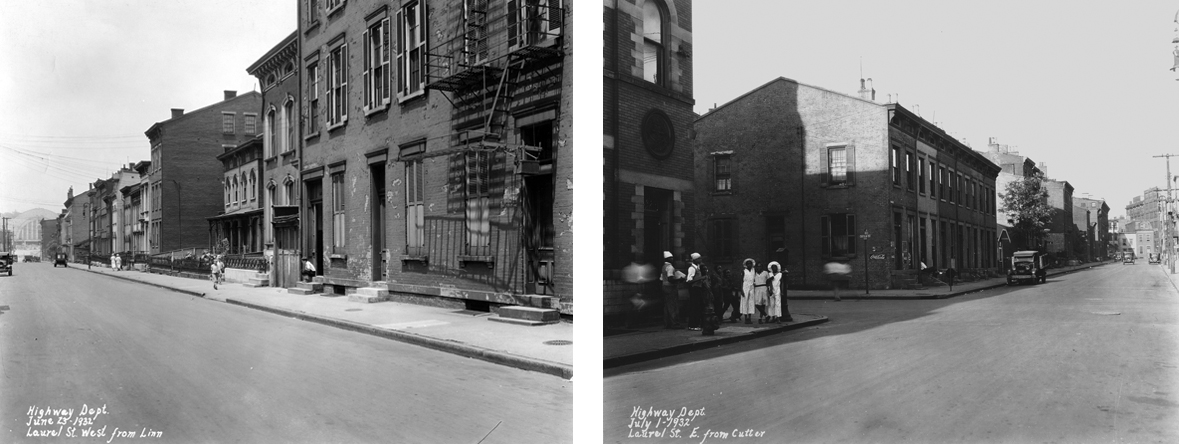
(Left) Laurel Street looking west from Linn Street, Union Terminal under construction in background, June 23, 1932
(Right) Laurel Street looking east from Linn Street across Cutter Street, July 1, 1932
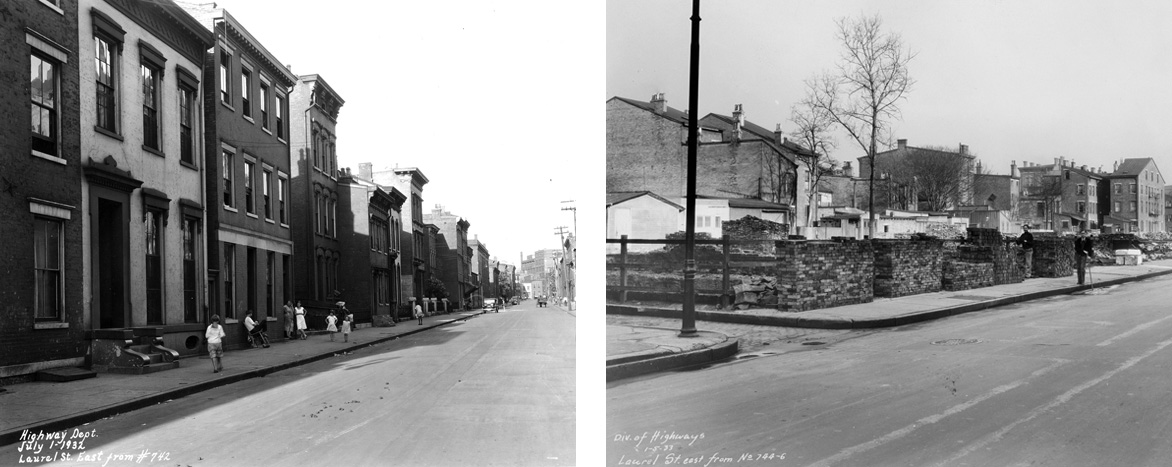
(Left) Looking east from 742 Laurel Street, July 1, 1932
(Right) Looking east from 744 Laurel Street, January 5, 1933
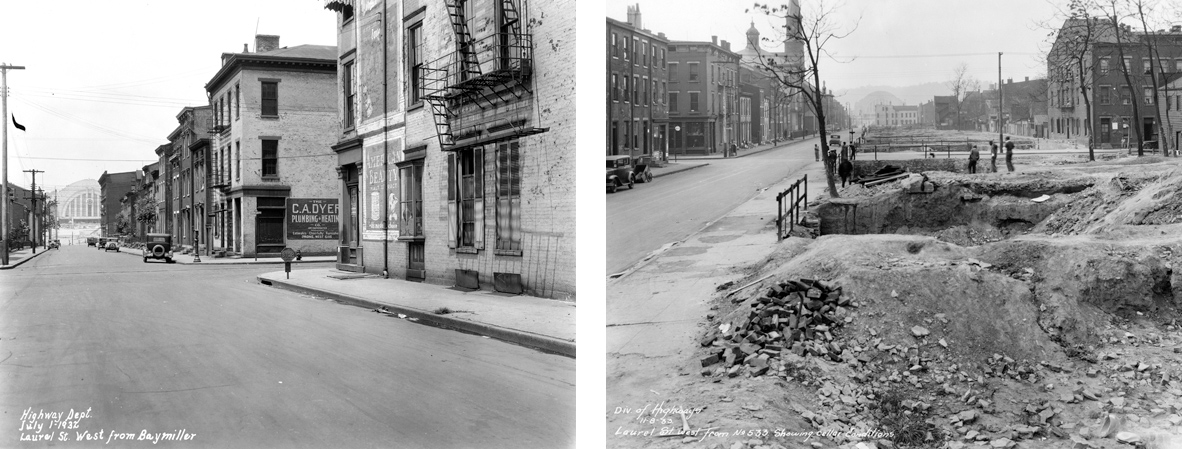
(Left) Laurel Street looking west from Baymiller Street, July 1, 1932
(Right) View of Laurel Street looking west, houses on north side of Laurel Street razed for widening, November 8, 1933
After the parkway was completed and Union Terminal opened in 1933, the street was again renamed in 1935, becoming known as “Lincoln Park Drive” and welcoming residents and travelers to the soon-to-be-bustling Union Terminal. The street would remain so named for 41 years until changed again in 1976 to “Ezzard Charles Drive” in honor of Cincinnati’s own World Heavyweight Boxing Champion, Ezzard Mack Charles. On September 27, 1950, Charles won the title of World Heavyweight Champion when he defeated Joe Louis in a 15-round match at Yankee Stadium.
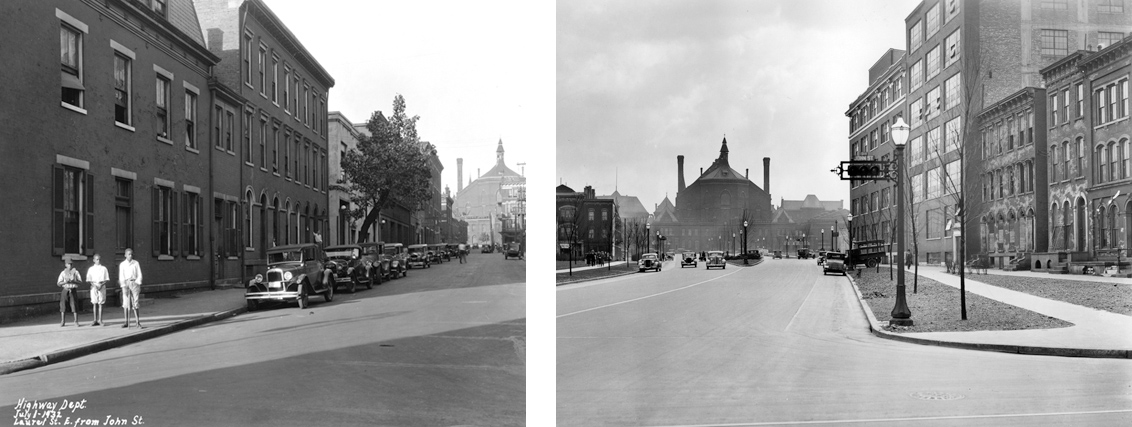
(Left) Laurel Street looking east from John Street, July 1, 1932
(Right) Lincoln Park Drive looking east from John Street, April 18, 1936

(Left) View from 914 Laurel Street, looking west across Freeman Avenue at Union Terminal construction, June 30, 1932
(Right) Union Terminal Approach, looking southwest, June 30, 1932
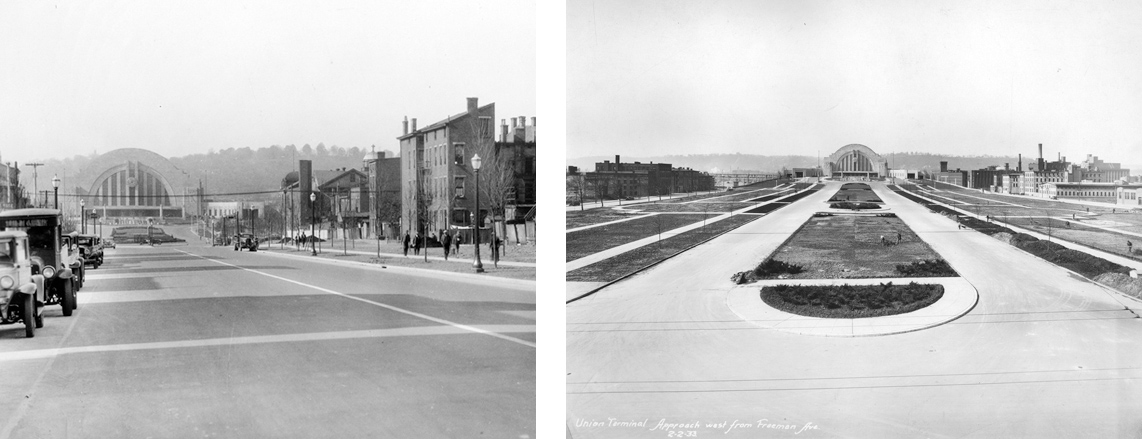
(Left) Terminal Parkway looking west from Linn Street, November 7, 1934
(Right) Union Terminal Approach looking west from Freeman Avenue, February 2, 1933
Born in Lawrenceville, Georgia, Charles moved to Cincinnati at the age of nine to live with his grandmother, who resided at 929 Laurel Street. The residence would have been in the proximity of the buildings seen on the right side of the street in the image below. Next to this is an image of Ezzard Charles wearing the World Heavyweight Champion belt he earned in 1950 and that he successfully defended four times until his loss to Jersey Joe Walcott in 1951. His career spanned the 1940s and 1950s, until he retired in 1959. The champion passed away on May 28, 1975 from complications associated with Lou Gehrig’s Disease, which he’d fought since the mid-1950s. In 1976, Cincinnati honored their hometown hero by naming the street on which he grew up “Ezzard Charles Drive.”

(Left) Terminal Parkway under construction, looking east from President Place toward Freeman Avenue, June 30, 1932
(Right) 1950 World Heavyweight Boxing Champion Ezzard Mack Charles (http://boxrec.com/media/index.php/File:1_Belt_Ezzard_Charles_vintage_photo_10x8_jpg.jpg)
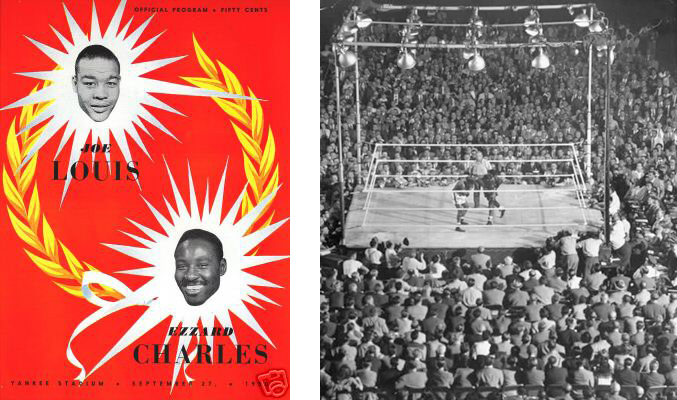
(Left) Official Program of the 1950 World Heavyweight Champion Boxing Match at Yankee Stadium, Bronx, NY, September 27, 1950 (http://boxrec.com/media/index.php/File:Louis-Charles.Program.jpg)
(Right) Charles vs. Walcott, World Heavyweight Champion Boxing Match at Forbes Field, Pittsburg, PA, July 18, 1951 (http://boxrec.com/media/index.php/File:Charles-Walcott.jpg)
Sources:
http://library.cincymuseum.org/aag/bio/charles.html
http://boxrec.com/list_bouts.php?human_id=9012&cat=boxer
http://en.wikipedia.org/wiki/Ezzard_Charles
http://coxscorner.tripod.com/charles_gs.html
http://www.cincymuseum.org/unionterminal
 This project is funded by a grant for $60,669 through the Library Services and Technology Act, administered by the State Library of Ohio.
This project is funded by a grant for $60,669 through the Library Services and Technology Act, administered by the State Library of Ohio.
